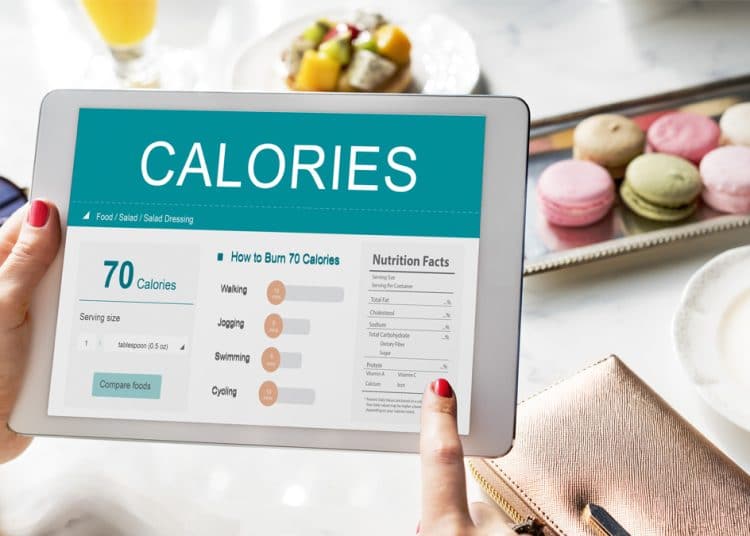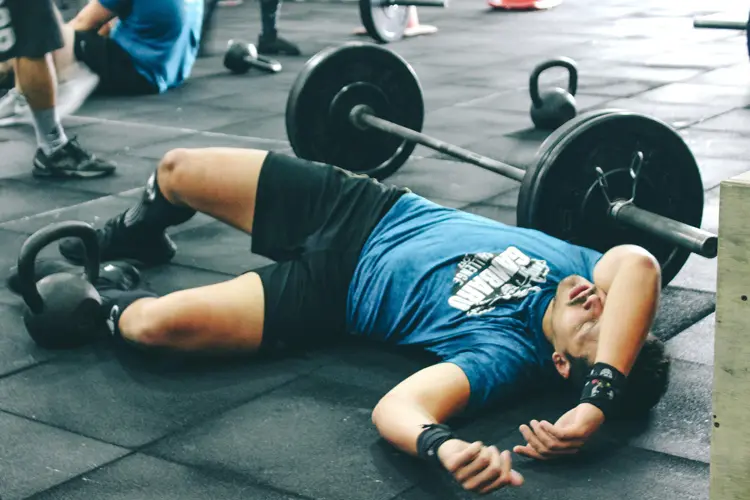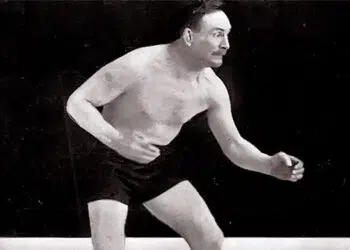If you want a great-looking physique, you need to increase muscle mass and reduce fat mass. This will leave you muscular and lean. The relationship between muscle mass and fat mass is called body composition and is usually expressed as your body fat percentage.
A lot of bodybuilders treat gaining muscle and losing fat as two different processes called bulking (gaining muscle) and cutting (losing fat). That’s because these processes involve very different nutritional approaches.
It’s generally accepted that bulking needs a calorie surplus while cutting involves a calorie deficit. In other words, you have to eat big to get big and then diet the fat away when you feel you’ve gained enough muscle.
At the end of a bulking/cutting cycle, you should be more muscular than you were at the start and leaner, too. However, fat gain is all but unavoidable during bulking, and most cutting cycles also involve at least some muscle loss.
Opponents of the bulking/cutting process believe that it’s possible to build muscle and lose fat simultaneously. This is a controversial opinion, which many training experts believe is impossible.
However, under certain circumstances, it may be possible to gain muscle and lose fat at the same time – a process called body recomposition.
Level Up Your Fitness: Join our 💪 strong community in Fitness Volt Newsletter. Get daily inspiration, expert-backed workouts, nutrition tips, the latest in strength sports, and the support you need to reach your goals. Subscribe for free!
In this article, we reveal if and how you can achieve body recomposition.
What is Body Recomposition?
Body recomposition (AKA recomp) is the process of building muscle and gaining fat simultaneously and is considered to be the “holy grail” of training and nutrition. The reason that recomp is such a controversial subject is that it is generally accepted:
- To build muscle, you need a calorie surplus
- To lose fat, you need a calorie deficit
As you can see, building muscle and burning fat are two opposing dietary processes.
However, while the above statements make a lot of sense, they don’t tell the whole story. That’s because:
- You don’t HAVE to have a calorie surplus to build muscle (1)
- You don’t HAVE to have a calorie deficit to lose fat (2)
Unfortunately, building muscle without a calorie surplus and losing fat without a calorie deficit isn’t easy, and not everyone is able to pull it off. That’s why a lot of people think that body recomp is impossible.
The groups most likely to be able to achieve body recomposition include:
Beginners
Beginners are in a very enviable position. Their bodies adapt to almost any training stimulus by building muscle. Muscle mass tends to increase fastest during this time. Simply going from a sedentary lifestyle to being more active can also lead to fat loss. The result? They gain muscle and lose fat simultaneously.
After a long layoff from training
If you take an extended break from training, say more than 6-12 months, your body starts to “forget” you were ever in shape and starts to return to its beginner status. If you’ve had a long layoff from training, losing muscle, and gaining fat in the process, just getting back in the gym and working out regularly again could result in body recomposition.
You start training correctly
Just because you’ve been working out for a while doesn’t mean you’ve been building muscle. If your workouts consist of nothing but biceps curls and the pec deck, you are still really a beginner, even if you’ve been going to the gym for a year or more. Following a well-designed workout and training properly could be all you need to get on the road to body recomposition.
Your diet was poor, but now you’re eating better
You can’t out-train a bad diet. Not eating correctly could mean that even consistent workouts are unproductive, and your fat levels remain unchanged. Eating clean, consuming enough protein, and following a more nutritious diet could lead to body recomposition, especially if you’ve never done it before.
You take performance-enhancing drugs
Anabolic/androgenic steroids (AAS) and other performance-enhancing drugs (PEDs) have a huge impact on your physiology. Some compounds mean you can significantly increase muscle mass even in severe caloric restriction. In contrast, others cause fat loss even if you eat junk. Unfortunately, these substances are also very bad for your health. They can cause severe acute and chronic illnesses and even death.
However, while the odds are against more advanced, natural exercisers achieving body recomposition, there are several studies that suggest that it’s not impossible (3).
How to Recomp – A Step by Step Guide
Firstly, forget the idea of doing a fast body recomp. Trying to lose fat quickly increases the risk of losing muscle, too. Similarly, you can’t expect to build muscle at an accelerated rate. Trying to gain muscle fast will invariably lead to fat gain.
So, if you want to gain muscle and lose fat simultaneously, be prepared for slow progress. Because of this, some lifters may prefer the traditional bulking/cutting approach to building muscle and losing fat, especially if they want to see more measurable results.
If you are still interested in trying body recomp, this is what you need to do!
Do lots of heavy strength training
It goes without saying that if you want to build muscle, you need to hit the weights frequently and consistently. It’s only by challenging your muscles that they will respond by getting bigger and stronger.
Ultimately, any workout that overloads your muscles will trigger hypertrophy, so you need to choose one that fits into your schedule, and that’s right for your fitness level and training status.
Good options include:
- The Functional Training Split
- Bro Split Workout
- Viking Workout
- Push-Pull-Legs Workout
- Powerbuilding Workout
If you are more experienced, you can also design your own bodybuilding training plan. Whichever option you choose, make sure you change your program every 6-8 weeks to avoid training plateaus.
Think twice about doing a lot of cardio
Cardio burns calories, and that could speed up fat loss. But, doing a lot of cardio could also lead to muscle atrophy. As such, it’s best to limit cardio to just a couple of brief workouts per week, preferably using HIIT.
HIIT, short for high-intensity interval training, is more likely to stimulate your fast-twitch muscle fibers leading to muscle gain or, at least, muscle preservation. In contrast, LISS or low-intensity steady-state cardio could cause atrophy.
Level Up Your Fitness: Join our 💪 strong community in Fitness Volt Newsletter. Get daily inspiration, expert-backed workouts, nutrition tips, the latest in strength sports, and the support you need to reach your goals. Subscribe for free!
What about all those bodybuilders who do an hour or more of cardio in the lead-up to show without losing a lot of muscle? That’s the power of anabolic steroids. For natural lifters, all that cardio would probably cause major muscle loss.
Create a small calorie deficit
Most fat loss diets involve a significant calorie deficit – usually 500 calories or more. While that’s great for fat burning, if your deficit is too large, it will undermine muscle gain. It could even lead to muscle loss.
So, for recomp, you need a much smaller deficit – typically 200-300 calories per day. This means your rate of fat loss will be much slower than the usual 1-2 pounds that most people look for during a cutting diet. Half a pound per week is good going. However, that’s the price you need to pay to not just avoid losing muscle but to increase hypertrophy.
To determine your calorie intake for body recomposition, calculate your TDEE and subtract 200-300 from that number. Track your meals to make sure you hit that number every day.
Pump up the protein
While you can build muscle (albeit quite slowly) without a huge calorie surplus, you can’t do it without protein. Your body uses the amino acids in protein to repair and build muscle tissue. Too little protein means no materials for muscle building.
While maintaining your modest calorie deficit, make sure you consume adequate protein every day. Aim for about one gram per pound or two grams per kilogram of bodyweight. Alternatively, use our protein calculator to find out how much protein you need to consume.
Using a protein supplement may make it easier to hit your protein intake target if you are unable to eat enough high-protein foods.
Use creatine
Creatine is a popular supplement. It can help build muscle and, just as importantly, prevent muscle breakdown or catabolism (4). As such, it could help you achieve your goal of body recomposition more easily. Creatine is safe to use, cheap, and readily available.
Use our creatine calculator to determine how much creatine you need to use for optimal results.
Get enough sleep
Getting less than the recommended 7-9 hours of sleep per night can cause fat gain and muscle atrophy (5). So, it makes sense that if you want to achieve successful body recomposition, you need to get at least 7-to-9 hours of sleep per night.
Not getting enough sleep will:
- Increase hunger and carb cravings
- Reduce your willpower
- Reduce motivation
- Increase fat storage
- Increase cortisol
- Decrease growth hormone and testosterone
- Interfere with recovery
- Decrease insulin sensitivity
All of which will put the brakes on your body recomposition progress.
Read more about the importance of sleep for body recomposition here.
Forget the scales
If your body recomp is going well, your body weight should not change much. After all, you’ll be gaining muscle and losing fat simultaneously. So, don’t be disheartened when you hop on the scales and the reading hasn’t budged.
Instead, use other methods to track your progress, such as your reflection, photos, or your body composition.
If your abs are starting to emerge and your performance in the gym remains constant or is improving, it’s a safe bet that you are losing fat and gaining muscle. But, you are getting noticeably weaker, even if you’re getting leaner, you are probably losing muscle, and you should increase your calorie and/or protein intake.
Be patient!
Even if you do everything right, your recomp progress will still be painstakingly slow. You might lose as little as 1-2 pounds of fat per month while gaining just 0.25-0.5 pounds of muscle. However, over 6, 12, or 18 months, your appearance will change significantly.
| Example Body Recomposition For A 180lbs Man | |||||
| Muscle Gain (Cumulative) |
Fat Loss (Cumulative) |
Fat Mass | Lean Body Mass | Body Fat % | |
| Month 1 | +0.25 | -2 | 25 | 153.25 | 14% |
| Month 2 | +0.5 | -4 | 23 | 153.5 | 13% |
| Month 3 | +0.75 | -6 | 21 | 153.75 | 12% |
| Month 4 | +1 | -8 | 19 | 154 | 11% |
| Month 5 | +1.25 | -10 | 17 | 154.25 | 10% |
| Month 6 | +1.5 | -12 | 15 | 155.5 | 9% |
If that progress is too slow for you, a traditional bulking/cutting approach may be more your speed.
Wrapping Up
For some people, body recomposition is simply not possible. If you’re an experienced lifter nearing your genetic potential for building muscle, you won’t be able to significantly increase muscle mass without a calorie surplus. In this case, bulking and cutting will probably produce better results.
But, if you are less experienced, further from your genetic potential, or have a lot of fat to lose, you may be able to build muscle while simultaneously losing fat.
Either way, you won’t know until you try! Use the information in this article to see if body recomposition is within your grasp.
References
1. Science Daily: Losing fat while gaining muscle: Scientists close in on the ‘holy grail’ of diet and exercise https://www.sciencedaily.com/releases/2016/01/160127132741.htm
2. PubMed: Effect of diet and exercise, alone or combined, on weight and body composition in overweight-to-obese postmenopausal women https://www.ncbi.nlm.nih.gov/pmc/articles/PMC3406229/
3. Strength and Conditioning Journal: Body Recomposition: Can Trained Individuals Build Muscle and Lose Fat at the Same Time? https://journals.lww.com/nsca-scj/fulltext/2020/10000/body_recomposition__can_trained_individuals_build.3.aspx
4. PubMed: Effects of oral creatine supplementation on muscular strength and body composition https://pubmed.ncbi.nlm.nih.gov/10731009/
5. PubMed: Insufficient sleep undermines dietary efforts to reduce adiposity https://www.ncbi.nlm.nih.gov/pmc/articles/PMC2951287/















